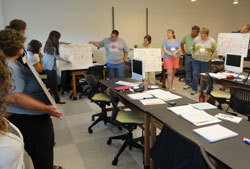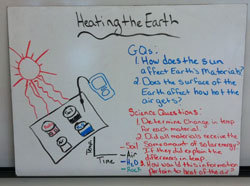
The Northern Indiana Science, Mathematics and Engineering Collaborative (NISMEC) is hosting workshops this summer for local intermediate and high school science teachers, focusing on best-practice approaches to science education and the new Indiana science standards that take place this fall. Led by Notre Dame faculty and the South Bend Community Schools Corporation, NISMEC received two grants totaling more than $600,000 to support the workshops.

Directed by Gordon Berry, professor of physics at the University Notre Dame, NISMEC is a collaborative that focuses on guided inquiry. In June, 45 intermediate center teachers developed science investigation modules using portable measuring devices, called Vernier probes, for investigations in temperature, water quality, blood pressure, magnetic and electric fields. The results are available to other South Bend teachers on the Internet. The teachers have access to borrow Vernier probes from the Notre Dame Library’s collection of more than 400 of the devices.
In July, high school teachers from northern Indiana studied the “modeling” approach to teaching chemistry and physics developed at Arizona State University a decade ago. The group also began developing a first-in-the-nation modeling program for high school freshman biology. State science coordinator Jennifer Hicks participated in two days of the biology work.

Modeling, which resembles real scientific research rather than classroom fact-lectures, is a guided inquiry approach where groups of students conduct investigations, find different models to solve problems, and publish their work to the class using large white boards which illustrate their descriptive, pictorial, graphical and symbolic modeling of the problem.
“Three years ago we were definitely behind the other states,” Berry said. “Modeling almost didn’t exist except in physics. In chemistry, we’re also playing catch-up, but our program trained about 60 Indiana chemistry teachers this year. We are ahead of other states in terms of setting up the first-year biology modeling curriculum. We hope to turn our work into a national program.”